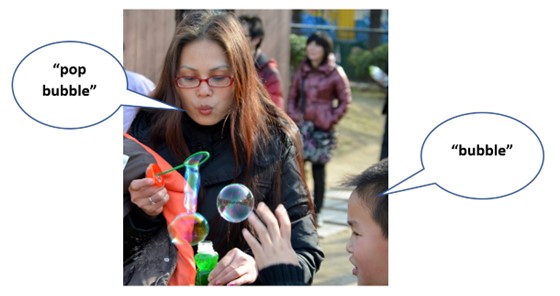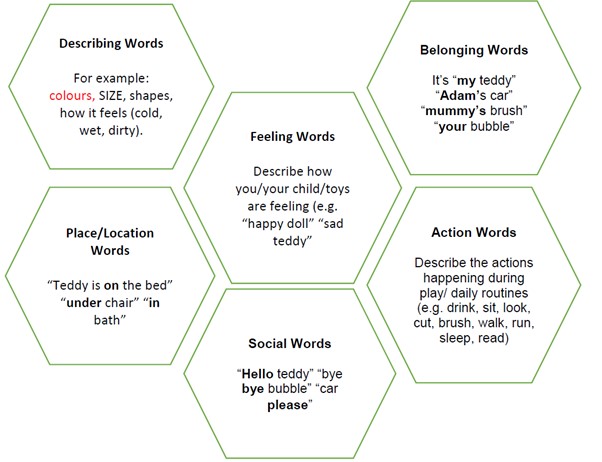Adding a Word
How?
- Spend 5 minutes observing and watching what your child is doing and saying
- during play
- when looking at picture books
- when looking at photos
- when looking at videos together
- when doing everyday household activities such as tidying, doing the washing, putting shopping away, self-care tasks.
- If your child says single words. REPEAT the word, then ADD another word.
For example: Child – “bubble” Adult – “pop bubble”

- If your child is already using 2-word phrases or longer phrases you can use the same process.
- REPEAT the phrase that your child has said and add another word.
For example: Child – “pop bubble”. Adult – “pop big bubble”
Why do we add words?
- Helps children understand more about what they are experiencing.
- Helps children learn new words.
- Helps children learn new ways to combine words.
Remember:
- Keep your language simple and speak slowly. Aim for 1 step above where your child is now (e.g. if they are currently saying single words, model simple 2-word phrases).
- Repeat the words and phrases frequently. Match your language to what your child is doing/looking at.
- Don’t force your child to say the words back to you. Children learn language by hearing and experiencing the words.
What types of word are useful?
- FIRST make sure you LABEL the item if the child is not saying this yet (e.g. name the item – “bubble”, “car”).
- Sometimes children rely on using descriptive words, such as colours, to label an item (e.g. “green” instead of “car”).
- Make sure you always reply to their word by naming the item.

Last updated20 Jan 2025

